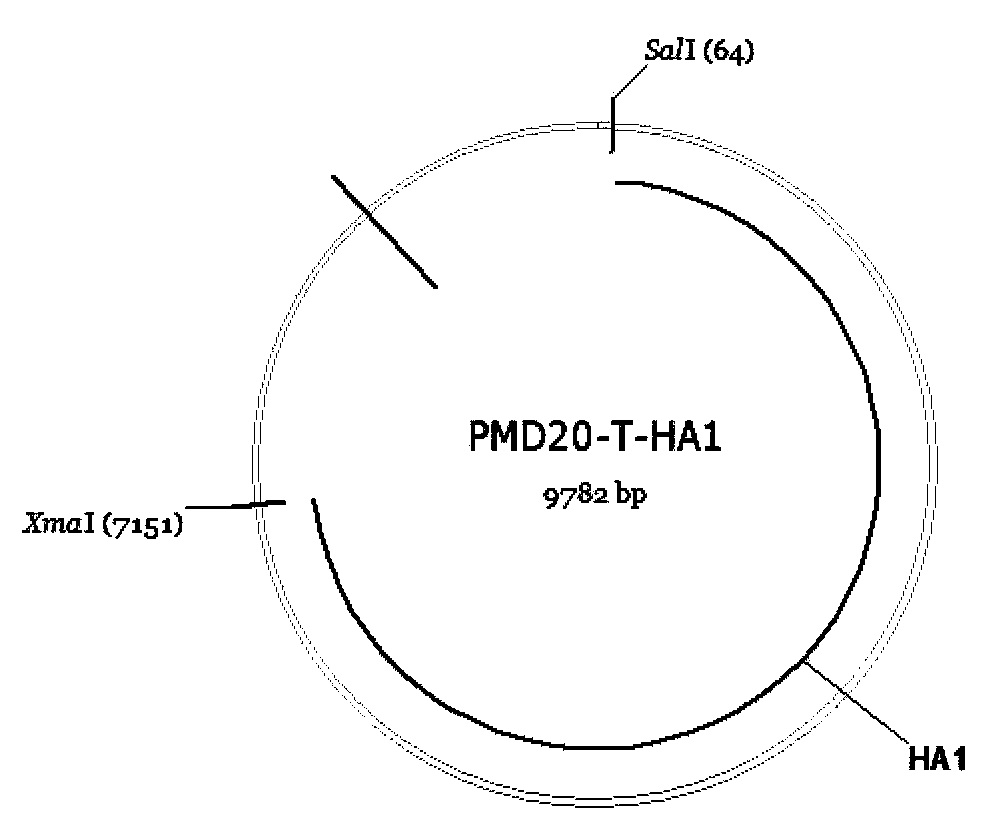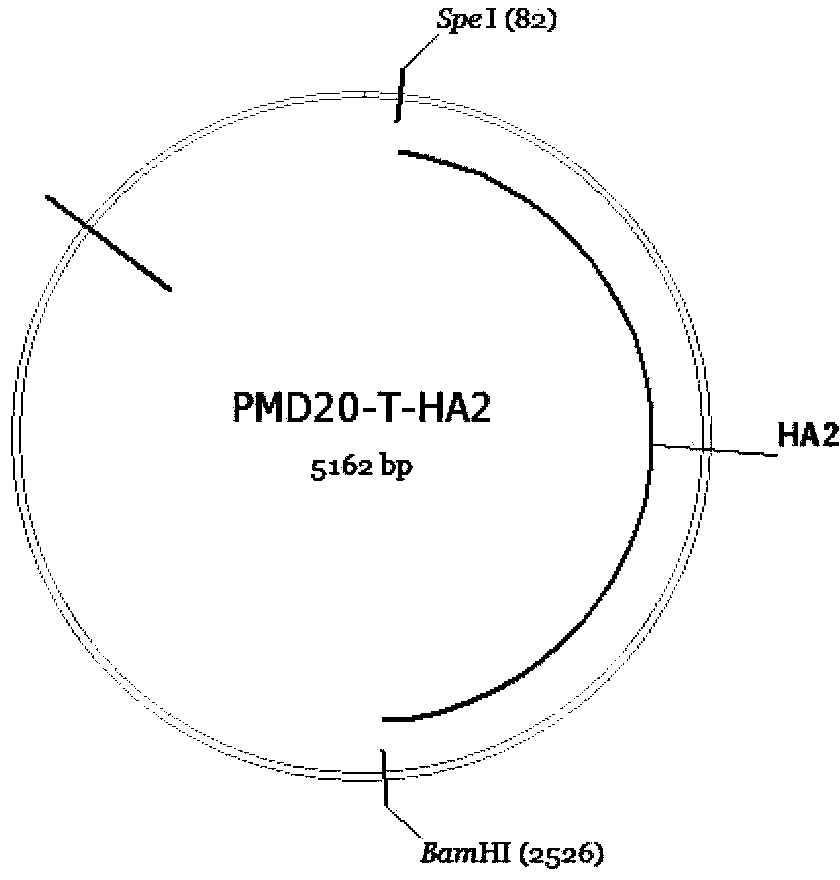RNA interference vector based on site-specific recombination, and construction method and application of same
An RNA interference and site-specific technology, applied in the biological field, can solve the problems of affecting the expression of the target gene and the inability to accurately locate the insertion position
- Summary
- Abstract
- Description
- Claims
- Application Information
AI Technical Summary
Problems solved by technology
Method used
Image
Examples
Embodiment 1
[0072] Example 1 A method for constructing an RNA interference vector based on site-specific recombination
[0073] 1. Experimental materials
[0074] Pig liver tissue: purchased from an experimental animal supply base in Gansu
[0075] iαv-pENTR / U6 vector: preserved by our laboratory
[0076] PGT-V1: Sponsored by Wang Huayan, Northwest A&F University
[0077] Multiple cloning restriction sites, related primers used in the experiment: synthesized by Shanghai Bioengineering Co., Ltd.
[0078] Various kits used in the experiment were purchased from Bao Biological Engineering (Dalian) Co., Ltd., and XmaI and AgeI were purchased from NEB Company.
[0079] 2. Method
[0080] 2.1 The composition of the carrier
[0081] The composition of the carrier such as PSN-U6 structure map Figure 9 As shown, its functions are introduced as follows:
[0082] HA1, HA2: for homologous recombination with a single intron region of the porcine genome β3 gene
[0083] hU6 (human U6 promoter):...
Embodiment 2
[0117] Example 2 Application of the vector of the present invention in the construction of a pig-derived cell silencing expression vector
[0118] 1. Construct a pig-derived cell silencing expression vector for expressing shRNA and inserting it into a specific position of the pig-derived cell genome through homologous recombination
[0119] (1) Use ClaI and SfiI to double digest the vector to expose the cohesive end between the U6 promoter and the termination signal on PSN-U6. The reaction conditions are 1*M buffer solution, 2 kinds of enzymes are added at the same time, 30°C for 1.5h, and then the temperature is adjusted to 50°C for 1.5h, and the digested products are recovered.
[0120] (2) Synthesize the DNA sequence required to transcribe shRNA, such as Figure 12 Shown:
[0121] (3) Ligate the synthesized fragment with the digested PSN-U6, transform the ligated product, pick a positive clone for sequencing verification, and the sequencing primers are:
[0122] 5'-G GAC...
PUM
 Login to View More
Login to View More Abstract
Description
Claims
Application Information
 Login to View More
Login to View More - R&D
- Intellectual Property
- Life Sciences
- Materials
- Tech Scout
- Unparalleled Data Quality
- Higher Quality Content
- 60% Fewer Hallucinations
Browse by: Latest US Patents, China's latest patents, Technical Efficacy Thesaurus, Application Domain, Technology Topic, Popular Technical Reports.
© 2025 PatSnap. All rights reserved.Legal|Privacy policy|Modern Slavery Act Transparency Statement|Sitemap|About US| Contact US: help@patsnap.com



